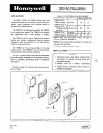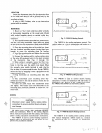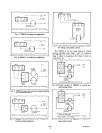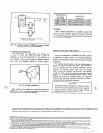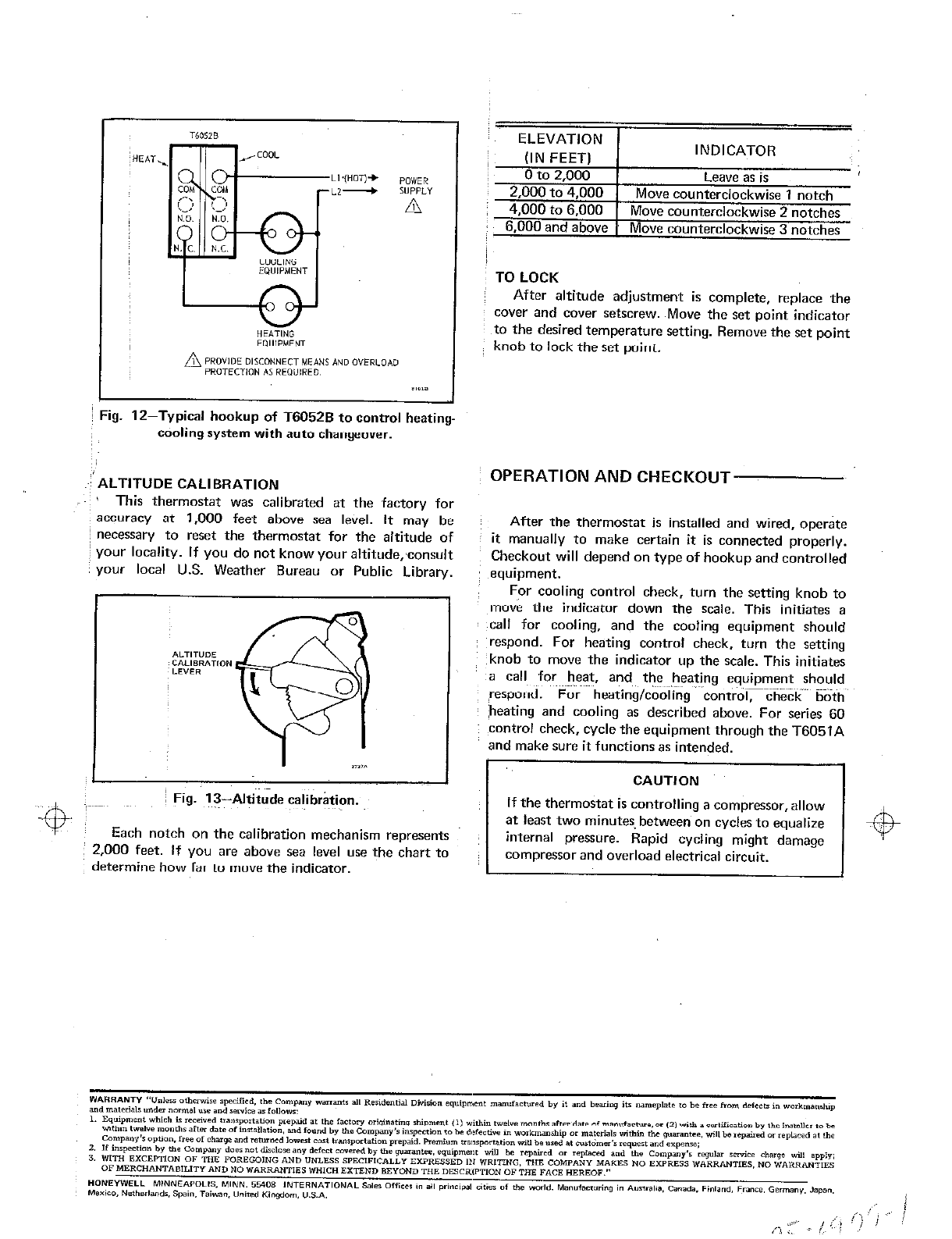
Fig
I. 12-Typical hookup of T6052B to control heating-
cooling system with auto changeover.
,‘AL TITUDE CALIBRATION
This thermostat was calibrated at the factory for
accuracy at 1,000 feet above sea level. It may be
necessary to reset the thermostat for the altitude of
your locality. If you do not know your altitude,eonsult
your local U.S. Weather Bureau or Public Library.
I
,
I I
~ Fig. 13-Altitude calibr&ion.
Each notch on the calibration mechanism represents
2,000 feet. If you are above sea level use the chart to
determine how far to move the indicator.
ELEVATION
INDICATOR
(IN FEET)
0 to 2,000
Leave as is
2,000 to 4,000 Move counterclockwise 1 notch
4,000
to
6,000 Move counterclockwise 2 notches
6,000 and above Move counterclockwise 3 notches
TO LOCK
After altitude adjustment is complete, replace the
cover and cover setscrew. Move the set point indicator
to the desired temperature setting. Remove the set point
knob to lock the set point.
OPERATION AND CHECKOUT
After the thermostat is installed and wired, operate
it manually to make certain it is connected properly.
Checkout will depend on type of hookup and controlled
equipment.
F~or cooling control check, turn the setting knob to
move the indicator down the scale. This initiates a
call for cooling, and the cooling equipment should
respond. For heating control check, turn the setting
knob to move the indicator up the scale. This initiates
‘a calls for heat, and the heating equipment should
:heating and cooling as described above. For series 60
control check, cycle the equipment through the T6051A
and make sure it functions as intended.
internal pressure. Rapid cycling might damage
compressor and overload electrical circuit.
By using this Honeywell literature, you agree that Honeywell will have no liability for any damages arising out of your use or modification to, the
literature. You will defend and indemnify Honeywell, its affiliates and subsidiaries, from and against any liability, cost, or damages, including
attorneys’ fees, arising out of, or resulting from, any modification to the literature by you.



